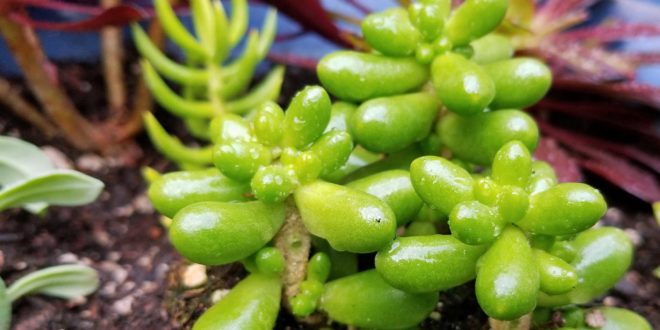New to our Sunnyvale garden in 2019 is Sedum hernandezii, native to Puebla, Mexico. Sedum hernandezii is one of the “Jellybean” sedums so named for their exceedingly plump and colorful jellybean shaped leaves . Large, star-shaped yellow flowers appear in winter and spring.
A very low grower, this sedum does well as a potted specimen, great for dish gardens, windowsills, wreaths or small area ground cover, and works well in the nooks and crannies of a rock garden landscape. They like to be moderately moist but never overly wet. Water thoroughly when soil is dry to the touch. Almost any good potting mix or porous soil with adequate drainage will suit these succulents. Sedums like good air circulation, and little or no fertilizer is required. Outdoors provide partial sun to light shade, but they will be unhappy and lose their characteristic color and shape unless given lots of bright light when kept indoors. It has excellent drought and cold tolerance but protect from frost to prevent scarring.
Sedum is a large genus of flowering plants in the family Crassulaceae, members of which are commonly known as stonecrops. The genus has been described as containing up to 600 species. The term sedum is from the Latin word “sedo” meaning “to sit,” in reference to their ground-covering nature.
Crassulacean acid metabolism, also known as CAM photosynthesis, is a carbon fixation pathway that evolved in some plants as an adaptation to arid conditions. In a plant using full CAM, the stomata in the leaves remain shut during the day to reduce evapotranspiration, but open at night to collect carbon dioxide (CO2).








